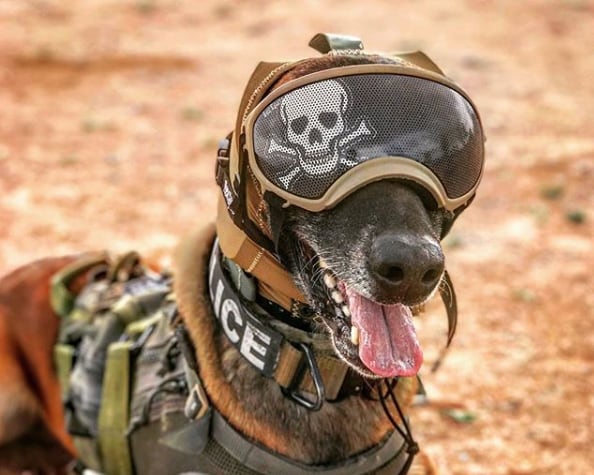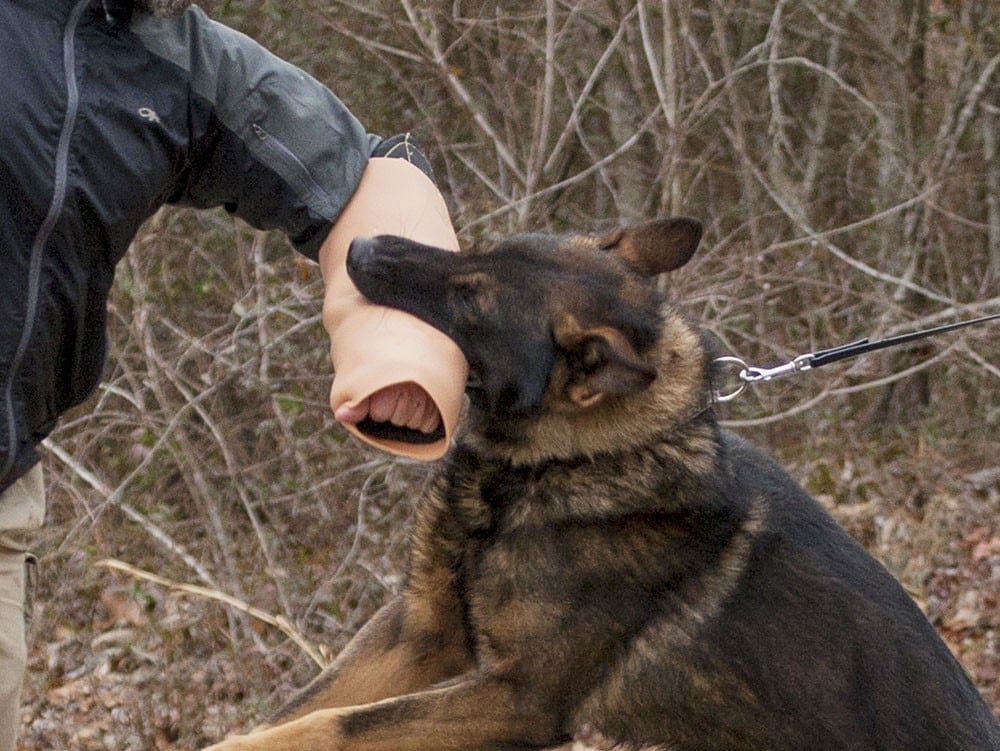When a military dog sinks its teeth into the bulky suit of its trainer, the dog gains experience about what to do in the real world, but it also can pick up some bad habits. Until now, there hasn’t been a good solution.
So, Army scientists have designed a more realistic sleeve device that not only feels like flesh but can bleed like flesh, too. The added realism helps focus and polish the training.
Army special operations forces are already using it to improve their dogs’ bite.
Dr. Stephen Lee, senior scientist with the Army Research Office, part of the Combat Capabilities Development Command, talked with Army Times about how the sleeve was developed.
RELATED

“This allows for a full-mouth bite and a more realistic training scenario for canines,” he said.
That’s because the new bite sleeve gives them an “authentic human skin texture,” according to research office statement. And the reduced circumference of the arm makes it more like the real thing.
The traditional suit was built, and is still used, for good reason, he said. The material keeps the target from actually getting bitten and protects the dog’s teeth, he said.
About five years ago, while working on other military-animal focused work, Lee and students at North Carolina State University and Campbell University, North Carolina, began work on the problem.
Lee and his teams have also developed advanced eye protection masks and hearing protection for dogs who can suffer debilitating injuries in the high-speed work they do with military forces.
Early versions of the sleeve emerged fast and have been in use for a few years by select units. Though Lee wasn’t permitted to divulge which Army units, he did say it involved dog handlers in special operations forces.
It wasn’t until this spring that the patent was finally approved. Lee expects it might eventually become available for use by bite-trained police working dogs, as well.
Dogs do more than bite.
The run security, patrol, explosives detection, tracking, search and rescue, sentry and tactical duties, he said.

The bite isn’t an “attack” feature of their training but is instead used to help restrain a perpetrator or combatant.
Current bite training sleeves are quite bulky, making them hard to conceal. That takes away from the realism of the training; very few targets will be waddling around like a blowfish version of a human being.
With silicone bite products, the trainer has to attach an extra arm or leg to his body, which is unwieldy and also unrealistic. Though the suits and other devices are useful in their own ways, the lack of realism doesn’t reinforce the habits that trainers are trying to ingrain in their canines.
The dogs would sometimes treat bite-training like a game. That led, at times, to dogs playfully biting their handler when in other training or on the job.
They also got used to the texture and feel of the bite when they acted at their trainer’s command, even though that’s not what a bite would feel like in a real-world situation. It was a shock to them when they actually bit bare flesh.
“In the past, trainers would wrap firehose around an arm and put steaks duct-taped to the outside of it,” Lee said. “That didn’t last long.”
The new bite training device acts as a “polishing tool,” he said. It prepares military working dogs for real scenarios after they have learned the fundamentals.
Todd South has written about crime, courts, government and the military for multiple publications since 2004 and was named a 2014 Pulitzer finalist for a co-written project on witness intimidation. Todd is a Marine veteran of the Iraq War.



